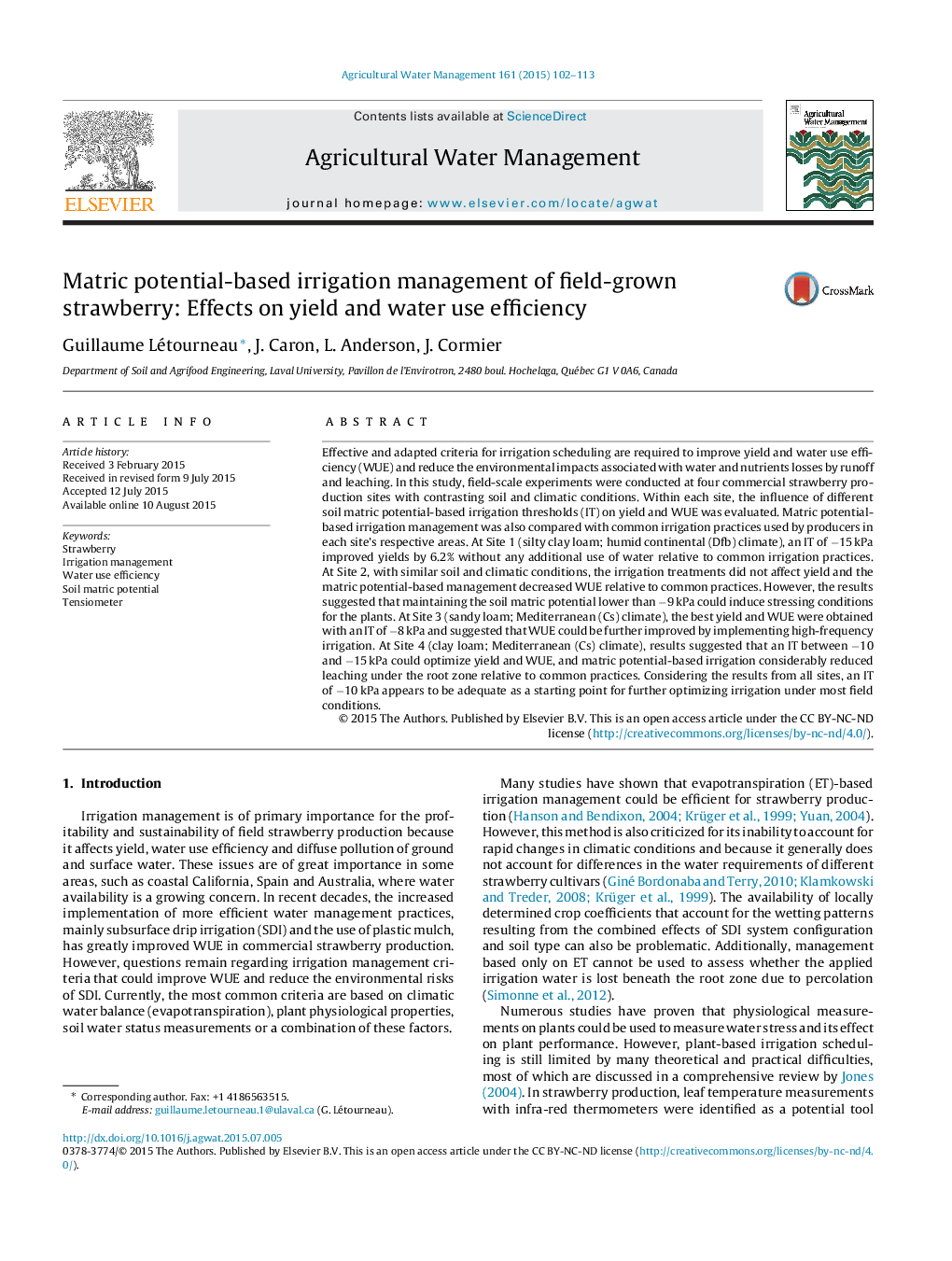| کد مقاله | کد نشریه | سال انتشار | مقاله انگلیسی | نسخه تمام متن |
|---|---|---|---|---|
| 6363618 | 1622918 | 2015 | 12 صفحه PDF | دانلود رایگان |
عنوان انگلیسی مقاله ISI
Matric potential-based irrigation management of field-grown strawberry: Effects on yield and water use efficiency
ترجمه فارسی عنوان
مدیریت آبیاری مبتنی بر پتانسیل توت فرنگی مزرعه ای: اثرات بر عملکرد و بهره وری مصرف آب
دانلود مقاله + سفارش ترجمه
دانلود مقاله ISI انگلیسی
رایگان برای ایرانیان
کلمات کلیدی
توت فرنگی، مدیریت آبیاری، بهره وری استفاده از آب، پتانسیل ماتریالی خاک، تنسیمتر،
موضوعات مرتبط
علوم زیستی و بیوفناوری
علوم کشاورزی و بیولوژیک
علوم زراعت و اصلاح نباتات
چکیده انگلیسی
Effective and adapted criteria for irrigation scheduling are required to improve yield and water use efficiency (WUE) and reduce the environmental impacts associated with water and nutrients losses by runoff and leaching. In this study, field-scale experiments were conducted at four commercial strawberry production sites with contrasting soil and climatic conditions. Within each site, the influence of different soil matric potential-based irrigation thresholds (IT) on yield and WUE was evaluated. Matric potential-based irrigation management was also compared with common irrigation practices used by producers in each site's respective areas. At Site 1 (silty clay loam; humid continental (Dfb) climate), an IT of â15Â kPa improved yields by 6.2% without any additional use of water relative to common irrigation practices. At Site 2, with similar soil and climatic conditions, the irrigation treatments did not affect yield and the matric potential-based management decreased WUE relative to common practices. However, the results suggested that maintaining the soil matric potential lower than â9Â kPa could induce stressing conditions for the plants. At Site 3 (sandy loam; Mediterranean (Cs) climate), the best yield and WUE were obtained with an IT of â8Â kPa and suggested that WUE could be further improved by implementing high-frequency irrigation. At Site 4 (clay loam; Mediterranean (Cs) climate), results suggested that an IT between â10 and â15Â kPa could optimize yield and WUE, and matric potential-based irrigation considerably reduced leaching under the root zone relative to common practices. Considering the results from all sites, an IT of â10Â kPa appears to be adequate as a starting point for further optimizing irrigation under most field conditions.
ناشر
Database: Elsevier - ScienceDirect (ساینس دایرکت)
Journal: Agricultural Water Management - Volume 161, November 2015, Pages 102-113
Journal: Agricultural Water Management - Volume 161, November 2015, Pages 102-113
نویسندگان
Guillaume Létourneau, J. Caron, L. Anderson, J. Cormier,
